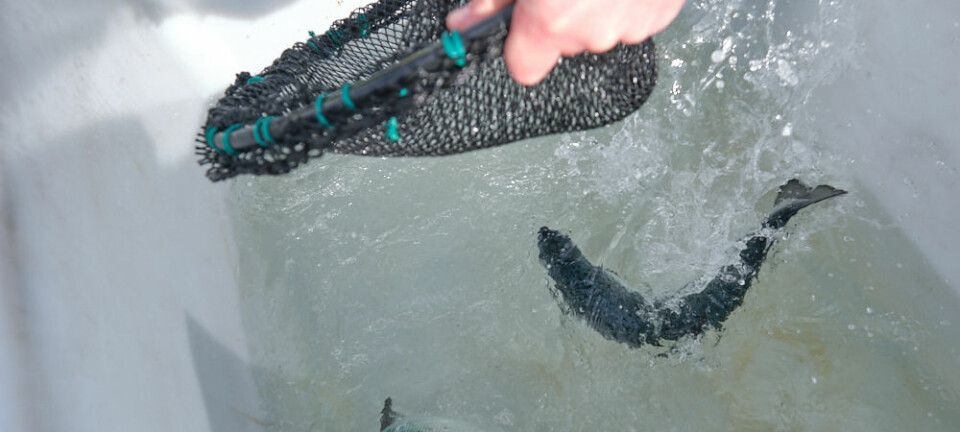
Norway's lice impact assessments must win everyone's trust, say lawyers
Government must accept that current knowledge and decision-making basis is not good enough
The “hegemony" of institutes that have been given control of Norway’s traffic light system for salmon farming is over, say seafood lawyers reviewing a six-party deal made in the Storting (Norwegian parliament) in June.
The lawyers, Trond Hatland, Mons Alfred Paulsen and Daniel-André Hansen from the Thommessen practice, make the claim in their interpretation of the agreement which included changes to regulatory proposals made by the Labour government in its Aquaculture Report. The Report had placed great emphasis on tying production limits to reductions in sea lice in pens.
Thommessen has previously represented salmon farming companies in unsuccessful legal challenges to biomass reductions made under the traffic light system. The biennial traffic light designations dictate whether fish farmers in Norway’s 13 salmon production areas can increase or maintain production levels, or must reduce them by 6%, depending on perceived harm to wild salmon from sea lice emanating from fish farms.
The designations – red equates to a volume reduction – are made by a government minister on the advice of a group of 10 experts in sea lice and wild salmon and a steering group composed of one representative each from the Veterinary Institute, the Institute of Marine Research and the Norwegian Institute for Nature Management.
Decisive guidance
In an article about the June agreement, the Thommessen lawyers write that the Storting did not accept the government's proposal to introduce dynamic lice quotas based on the same knowledge base as the current traffic light system, and also gave specific and decisive guidance for the government's further work on a (in effect) new aquaculture report.
According to the lawyers’ summary:
1. The government's new studies of models should be guided by the actual and relative environmental impact of the aquaculture industry. The models should be designed with individual incentives.
2. The technical and biological data basis for environmental impact, including the monitoring of sea lice, wild fish and fish welfare, with the use of new technology and automated data collection – will be strengthened.
3. A more comprehensive and thorough knowledge base for the environmental impact of aquaculture will be developed, including the industry's actual and relative impact on the Norwegian wild salmon population. A broad range of researchers and professionals will participate in the work, and there will be continued openness about methods and models.
4. Experience from the evaluation of the traffic light system will be used to improve the decision-making basis and support the development of any new regulation, including research and monitoring related to limit values for wild fish mortality, effects of lice infestations on wild salmon stocks and population assessments of spawning stock targets, etc. will be strengthened.
5. The government is asked to consider establishing a selection of relevant actors who can contribute to better dialogue and interaction between the various actors associated with Norwegian aquaculture.
Knowledge base
Framework conditions, knowledge base, the Aquaculture Committee's proposals, the government's and others' models, environmental technology schemes and other measures must: (a) be thoroughly investigated by the government, (b) be submitted for consultation, before (c) the choice of regulatory model is submitted for new and final consideration in the Storting.
“The investigation work must include various environmental impacts that wild salmon populations are exposed to, not just sea lice,” the lawyers write in an article for Fish Farming Expert’s Norwegian sister site, Kyst.no.
“Specifically, it must include climate effects, nutrient availability and other factors in the ocean, predation, exploitation, power generation, and interventions from buildings, facilities and other measures that degrade wild salmon habitat in rivers.
“In order for the impact of sea lice to be assessed as part of the whole, it is necessary to strengthen knowledge about sea lice. This includes, among other things, research on limit values for wild fish mortality, monitoring the effects of lice infestations on wild salmon populations and strengthening population assessments of spawning population targets, etc.
“The work requires a full review of lice biology, from 'birth' to 'death'. It also means that the migration of wild salmon must be reviewed to ensure a sustainable link between lice in the infective stage (copepodite) and the smolt that swims out to sea in a short time.”
Salmon farmers 'will be heard'
The broad political consensus, and the clear signals, mean that the government must take the Storting's guidance seriously, write the Thommessen team. Both the finding that the current knowledge and decision-making basis is not good enough, and the direction given for further work, have consequences.
“The need for a new knowledge base entails changes in the knowledge system. The requirement for a broad professional composition, with a selection of researchers and professionals, means that the hegemony of the ‘institutes’ that have been given control of the traffic light system is over. The same applies to the requirement to use the experiences from the evaluation of the traffic light system to improve the decision-making basis, and that consideration should be given to establishing a committee for better dialogue and interaction.
“The fact that proposals are to be studied and sent for consultation means that the aquaculture industry will this time be included in the advice, and will be (literally) heard. It must be a high priority for the government to appoint a professional team that everyone can trust, with the necessary competencies and impartiality. Only when a sound professional framework is in place can the Storting’s guidelines on a strengthened knowledge base be met.”























































